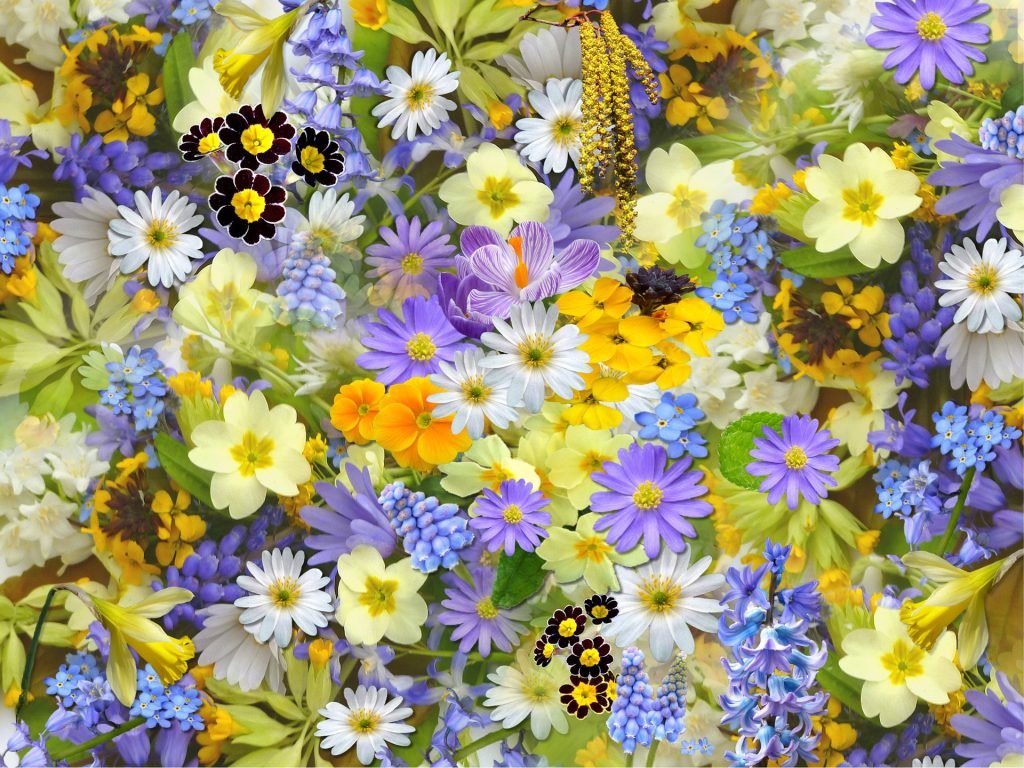Bees as Pollinators: Complete Guide to Plant Pollination
Pollination is the process by which pollen from the male part of a flower or plant’s reproductive apparatus is transferred to the female part of the plant. Bees as pollinators help ensure that plants can produce seeds and fruits
It is an essential mechanism for ensuring genetic diversity and reproduction. This fertilizes and helps produce fruit with seeds inside
Pollen grains are normally produced in a plant’s stamens and are typically composed of male gametophytes, which contain both sperm and a generative nucleus,
Plants that are self-incompatible, (like corn and tomatoes), need animal pollination to produce seeds.
Bees are often used for this task as their natural behaviors mimic that of humans and other animals, in addition to collecting pollen efficiently and having relatively short tongues.
It can also be accomplished by other methods including self-pollination or cross-pollination.
The process of pollination is essential for the reproduction of flowering plants. Pollinating agents may be insects, birds, bats, or even people.
Pollination can be accomplished by different means including wind (anemophily), insects (entomophily), and birds (ornithophily).
The most important pollinators are insects, but other animals like birds and bats also participate in pollination.
The process begins when pollen from the anthers on a flower’s stamen lands on a pollinator’s body.
The pollinator then transfers this pollen from one flower to another by brushing against the stigma or female part of the next flower.
Pollinators have been around since before the age of dinosaurs, but they are now in decline due to habitat loss, pesticides, climate change, diseases, and other factors.
The study of pollination has led to important discoveries in botany as well as agricultural science such as selective breeding and hybridization.
What is Pollination?

Pollination is the process by which pollen is transferred to the female reproductive organs of a plant, thereby enabling fertilization and the production of seeds and fruit.
Pollination is one of the most important factors in plant reproduction. Bees as pollinators are important for this process.
This is a process that creates variety among plants. Pollinators are animals such as insects, birds, bats, and sometimes even mammals that carry pollen from one plant to another in order to fertilize them.
Without pollination, plants would not be able to reproduce and their populations would dwindle.
Pollinating insects are often attracted by nectar or other substances released by flowers for this purpose.
Plants need these substances for food so they can grow and reproduce themselves. Pollinating insects spread pollen from the male to the female flowers so they can fertilize them and increase the possibility of generating fruit.
Pollination literally means fertilization. It is a process by which pollen grains are transferred from one plant to another for fertilization to occur during sexual reproduction in flowering plants, as well as some other plants.
In general, honeybees, bumblebees, and many other bees perform pollination by carrying pollen from male to female plants. This transfer enables fruit production and seed dispersal.
A specific type of bee, the sweat bee or halictid bee often performs cross-pollination between species of plants.
Pollinators improve food security because they increase the number of different types of fruit that can be grown in a given area. Without them, many fruits would not produce viable seeds or reproduce at all.
In many parts of the world, pollinators such as bees and birds are essential for plant reproduction. Pollinated plants are important in food production and so it is necessary to reduce or eliminate the use of pesticides that can harm these animals
A much-cited example of pollination in an agricultural context is the apple tree.
In order for apples to grow, bees as pollinators must transfer pollen from the male flower on the apple tree branch to the female flowers on the same branch.
This could be another nearby branch by visiting one of these flowers, carrying some of its pollen with it, and then depositing more pollen onto another flower.
Without cross-pollination, both male and female flowers will produce no fruit. Bees as pollinators do a lot of work and have a big impact on the environment.
Bees are essential for the production of food, plants, and flowers. Without these little insects, our world would be a very different place.
Pollinators are not just bees, but also butterflies, moths, birds, and bats. However, bees are the most important pollinators because they can visit flowers more often than other animal pollinators and they can carry pollen over greater distances.
Bees as Pollinators are attracted to different colors and shapes so it is a good idea to plant flowers in a variety of colors and shapes near your garden for them to visit.
Bees as pollinators, pollinate plants by transferring pollen from one flower to another.
Pollen is transferred to their bodies, legs, and head. When bees land on a flower, they move their back legs and body to shake the pollen off them onto the flower’s stamen or pistil.
In recent years, some farmers have begun to use this cycle to their benefit.
Benefits of Bees as Pollinators to the Environment and Human Food Sources

Bees are not only necessary for the production of honey, but bees as pollinators also help with plant propagations that are beneficial to the environment.
Bees are one of the most important pollinators in the world, but they are dying at an alarming rate!
Bees are responsible for pollinating about 1/3 of all crops in the world. Without them, we would not be able to grow as much food for ourselves.
The problem is that bees also need our help because their population is decreasing rapidly due to habitat destruction and pesticide use.
Meanwhile, pollinators are necessary for the production of many plants. This involves a process in which pollen is transferred from a male part of a plant to a female part of another plant, thereby fertilizing it and producing seeds.
Bees are beneficial to the environment and human food sources because they are the type of pollinator that can be trained to visit specific plants, such as berry plants or fruit trees.
Furthermore, they provide more benefits than just honey production; they also provide pollination services and help to make sure that our food sources grow well.
In this context, bees as pollinators are helpful to plants, which is necessary for them to reproduce. Bees also produce honey, which humans consume or use to make other foods.
Pollinators are a keystone species in the environment.
They provide an essential ecosystem service by pollinating plants. This is important because, without pollinators, many plants will not reproduce and produce the food humans need.
Thus, pollinators are very important to the environment and human food sources since they help plants reproduce, which in turn helps humans eat.
Bees as pollinators, are responsible for pollinating more than 130 types of crops, including fruits, vegetables, and nuts in the world.
These provide many benefits to humans, such as pollinating crops, reducing the use of pesticides, and keeping flowers and trees alive.
How Bees are Likely to be Disappearing at an Alarming Rate

The honeybee population has been declining for decades at an alarming rate, but it has been accelerated by the introduction of a new class of pesticides called neonicotinoids.
The sudden disappearance of colonies, in which all or nearly all of the adult bees have vanished, is a major concern as they are responsible for pollinating our food crops.
Certain types of neonicotinoid pesticides, which are used in the farming industry, have been found to reduce the likelihood that bumblebees will start a colony.
These chemicals are present in most modern farming practices and they have been found to be the cause of colony collapse disorder (CCD).
The chemical, clothianidin, is used as a seed treatment and is toxic to honeybees when they come into contact with it.
This could lead to more wild bee population collapses, which could have negative impacts on the environment research published in Nature Ecology & Evolution has found
Exposing bumblebees to the pesticide thiamethoxam reduced the odds of a queen starting a new colony by more than a quarter, according to researchers at Royal Holloway, the University of London, and the University of Guelph.
The study also found that this disorder is happening at an alarming rate and it is a major threat to our food security.
We need to be aware of this problem and do our best to save these bees because they are essential for our food production.

The researchers took field studies and turned them into mathematical models, which showed that Thiamethoxam exposure significantly increases the likelihood that wild bee populations could become extinct.
Dr. Gemma Baron, from the School of Biological Sciences at Royal Holloway University, claims that the Queen bees exposed to the pesticide are less likely to breed.
The scientist also warned that the survival of bumblebees is at stake, as new colonies need to be created every year. Thus, pointing to the importance of not just protecting them but also creating new ones.
What is a Beekeeper & How Do They Help with Pollination?

The honeybee is a pollinator that is responsible for spreading the pollen of flowers.
Pollination is the process of transferring pollen from the male organs of a flower to its female organs. This process allows new plants to form and grow.
Honeybees are a crucial part of our ecosystem, but they are in danger due to colony collapse disorder (CCD). CCD is an issue in which large numbers of honeybees die off, leaving hives with few or no bees at all.
The causes behind CCD are not fully understood, but it’s believed that there may be multiple causes such as pesticides, parasites, and loss of habitat due to urbanization.
A beekeeper is a person who keeps bees.
Beekeepers help save these pollinators by providing them with homes for them to live in and collecting their honey for us to enjoy!
They are an important part of the ecosystem because they help pollinate plants and crops.
Beekeepers can make a living by selling their honey, pollination services, or renting out their hives to farmers.
They can also make money by harvesting the wax and honeycomb from their hives for candles, cosmetics, or other products.
Conclusion
Biodiversity is the variety of life on Earth, including all the organisms and their habitats. It’s important because it helps maintain a healthy ecosystem.
Bees are the most important pollinators in the world. They are responsible for pollinating one-third of the world’s food supply.
This is why it is so important to protect them and their habitats. Bees face many dangers, including pesticides, habitat loss, climate change, and disease.
In this article, we have seen some of the benefits that bees offer to us and to biodiversity in general.
We have also seen how beekeeping can help us to protect bees and their habitats and how we can reduce our impact on them by taking a few simple steps such as buying organic food or planting bee-friendly plants in our gardens.


